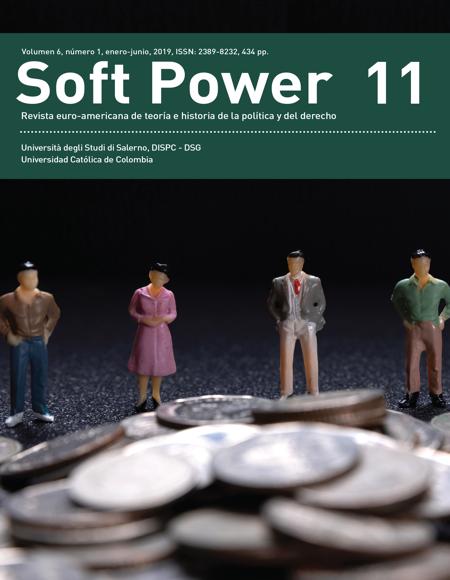Resumen
El artículo analiza algunas etapas fundamentales en la batalla por los derechos de los hombres y de las mujeres afroamericanas en los Estados Unidos de América, evidenciando las dificultades a las que se enfrentaron, sobre todo como consecuencia de los prejuicios transversalmente difundidos en la sociedad. El artículo se concentra en la originalidad de las posiciones del feminismo negro, mostrando cuánto han sido menospreciadas y malentendidas sus batallas. A partir del texto de Angela Davis, Women, Race & Class, en el artículo se reflexiona sobre el alcance universalista de las reivindicaciones del feminismo hegemónico, y se propone la pregunta; ¿es posible llevar a cabo una lucha en nombre y por cuenta de todas las mujeres, creando un puente entre las diversas clases sociales, o, más aún, asumiendo que las mujeres sean una única clase?
Palabras clave

Citas
Davis, A. (1971). Reflections on the Black Women’s Role in the community of Slaves. The black Scholar, 3(4), 2-15.
Davis, A. (1974). An Autobiography. New York: International Publishers.
Davis, A. (1981). Women, Race and Class. New York: Random House.
Staples, R. (1970). The Myth of Black Matriarchy. The Black Scholar, 1(3-4), pp. 8-16.
Wertheimer, B. (1977). We Were There. The story of working Women in America. New York: Pantheon, Books.
Hernton, C. (1975). Sex and racism in America. New York: Grove Press.
Stein, G. (1970). Three Lives. New York: Vintage Books.
Brownmiller, S. (1975). Against Our Will, Women and Rape. New York: Simon and Shuster.
Douglass, F. (1895). Why is the Negro Lynched? En Foner P. S. The Life and the Writings of Frederick Douglass, 4, 498-499.
Ball, E. (1998). Slaves in the Family. New York: Farrar, Straus and Giroux.
Dunaway, W. A. (2003). The African-American Family in Slavery and Emancipation. Cambridge-New York: Cambridge University Press.
Casadei, Th. (2013). Sarah Moore Grimké, Le radici bibliche dell’argomentazione femminista. En Grimké S. M, Poco meno degli angeli (pp. 5-15). Roma: Castelvecchieditore,.
Gordon, L. (1976). Woman’s body, Woman’s right. Birth Control in America. New York: Penguin Books.
Stanton, E. C., Anthony, S. B., Gage M. J. (Ed.). (1887). History of Woman Suffrage. Rochester: Charles Mann.
Mannucci, E. J. (2016). Baionette nel focolare. La Rivoluzione francese e la ragione delle donne, Milano: Franco Angeli.
De Gouges, O. (1791). Déclaration des droits de la femme et de la citoyenne. En Les Droits de la femme, Paris.
Badinter, E. (1989). Condorcet, Prudhomme, Guyomar: Paroles d’hommes (1790-1793). Paris: P.O.L.
Wollstonecraft, M. (1792). A Vindication of the Rights of Woman with Strictures on Political and Moral Subjects. London: Johnson.
Persico G. (2012). Mary Wollstonecraft tra (auto)biografia e critica sociale: la sua narrativa e il Ritratto di William Godwin. Lugano: Agorà & Company.
Rauschenbusch-Clough, E. (1898). A Study of Mary Wollstonecraft and the Rights of Woman. London: Green & Company.
Katsiaficas G. N. (1987). The Imagination of the New Left: A Global Analysis of 1968. Boston: South end Press.
Redstockings. (1969). Redstockings Manifesto. En Schneir M. (Eds.), The Vintage Book of Feminism (pp. 127-129). London: Vintage.
MacKinnon, C. (2006). Are Women Human? And Other International Dialogues. Cambridge: Harvard University Press.
Butler, J. (1990). Gender Trouble: Feminism and the Subversion of Identity. London: Routledge.
Crenshaw, K. W. (1989). Demarginalizing the Intersection of Race and Sex. University of Chicago Legal Forum, 4, 139-167.













